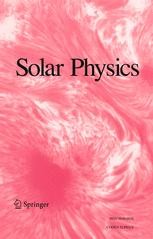Editors' Choice: "Coronal Photopolarimetry with the LASCO-C2 Coronagraph over 24 Years [1996 – 2019]"
 Lamy, P., Llebaria, A., Boclet, B. et al. Coronal Photopolarimetry with the LASCO-C2 Coronagraph over 24 Years [1996 – 2019]. Sol Phys 295, 89 (2020). https://doi.org/10.1007/s11207-020-01650-y
Lamy, P., Llebaria, A., Boclet, B. et al. Coronal Photopolarimetry with the LASCO-C2 Coronagraph over 24 Years [1996 – 2019]. Sol Phys 295, 89 (2020). https://doi.org/10.1007/s11207-020-01650-y
Editor's Choice (Research Article)
Published: 01 July 2020
Abstract:
We present an in-depth characterization of the polarimetric channel of the Large-Angle Spectrometric COronagraph/LASCO-C2 onboard the Solar and Heliospheric Observatory (SOHO). The polarimetric analysis of the white-light images makes use of polarized sequences composed of three images obtained though three polarizers oriented at +60∘, 0∘, and −60∘, complemented by a neighboring unpolarized image, and relies on the formalism of Mueller. The Mueller matrix characterizing the C2 instrument was obtained through extensive ground-based calibrations of the optical components and global laboratory tests. Additional critical corrections were derived from in-flight tests relying prominently on roll sequences of SOHO, on the basis of consistency criteria (e.g. the “tangential” direction of polarization), and from several applications, notably the time-dependent tomographic reconstruction of the coronal electron density. This took several years of effort, but resulted in the quasi-uninterrupted photopolarimetric analysis of the corona over two complete Solar Cycles 23 and 24, and the comparison with a variety of eclipse data obtained at different phases of these cycles. Our final results encompass the characterization of the polarization of the white-light corona, of its polarized radiance, of the two-dimensional electron density, and of the K-corona. The agreement with the eclipse data is excellent except for slight discrepancies affecting the innermost part of the C2 field of view. The present work leaves the two unpolarized components, F-corona and stray light, entangled and their complex separation will be dealt with in a follow-on article.
Solar Physics Editor's Choice:
In each volume of Solar Physics, a few articles are marked as “Editors’ Choice”. The primary criteria is original, high quality research that is of wide interest within the community.
